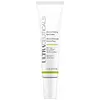What's inside
What's inside
 Key Ingredients
Key Ingredients

 Benefits
Benefits

 Concerns
Concerns

 Ingredients Side-by-side
Ingredients Side-by-side

Dimethicone
EmollientC12-15 Alkyl Benzoate
AntimicrobialAscorbic Acid
AntioxidantSqualane
EmollientDimethicone/Vinyl Dimethicone Crosspolymer
Skin ConditioningEthylhexyl Palmitate
EmollientHydrogenated Vegetable Oil
EmollientPolysilicone-11
Dipropylene Glycol Dibenzoate
EmollientHydroxyethyl Acrylate/Sodium Acryloyldimethyl Taurate Copolymer
Emulsion StabilisingTetradecane
PerfumingCetearyl Dimethicone Crosspolymer
Dimethicone Crosspolymer
Emulsion StabilisingBisabolol
MaskingHydrated Silica
AbrasivePPG-15 Stearyl Ether Benzoate
EmollientTocopherol
AntioxidantTribehenin
EmollientSalicyloyl Phytosphingosine
Skin ConditioningGlycine Soja Oil
EmollientSorbitan Laurate
EmulsifyingC18-36 Acid Glycol Ester
EmollientC18-36 Acid Triglyceride
EmollientCeramide Ng
Skin ConditioningTrihydroxystearin
Skin ConditioningPEG-10 Phytosterol
EmulsifyingLactic Acid
BufferingSodium Hyaluronate
HumectantPalmitoyl Hexapeptide-12
Skin ConditioningPalmitoyl Tripeptide-1
Skin ConditioningPalmitoyl Tetrapeptide-7
Skin ConditioningGlucomannan
Skin ConditioningDimethicone, C12-15 Alkyl Benzoate, Ascorbic Acid, Squalane, Dimethicone/Vinyl Dimethicone Crosspolymer, Ethylhexyl Palmitate, Hydrogenated Vegetable Oil, Polysilicone-11, Dipropylene Glycol Dibenzoate, Hydroxyethyl Acrylate/Sodium Acryloyldimethyl Taurate Copolymer, Tetradecane, Cetearyl Dimethicone Crosspolymer, Dimethicone Crosspolymer, Bisabolol, Hydrated Silica, PPG-15 Stearyl Ether Benzoate, Tocopherol, Tribehenin, Salicyloyl Phytosphingosine, Glycine Soja Oil, Sorbitan Laurate, C18-36 Acid Glycol Ester, C18-36 Acid Triglyceride, Ceramide Ng, Trihydroxystearin, PEG-10 Phytosterol, Lactic Acid, Sodium Hyaluronate, Palmitoyl Hexapeptide-12, Palmitoyl Tripeptide-1, Palmitoyl Tetrapeptide-7, Glucomannan
Water
Skin ConditioningGlycerin
HumectantCucurbita Pepo Seed Oil
EmollientDimethicone
EmollientIsopropyl Palmitate
EmollientDimethyl Isosorbide
SolventGlycol Distearate
EmollientStearic Acid
CleansingStearyl Alcohol
EmollientPalmitoyl Tripeptide-1
Skin ConditioningPalmitoyl Tetrapeptide-7
Skin ConditioningHydroxypinacolone Retinoate
Skin ConditioningOleic Acid
EmollientTerminalia Arjuna Extract
Skin ConditioningCocos Nucifera Oil
MaskingRosa Canina Fruit Oil
EmollientGlyceryl Stearate
EmollientPEG-100 Stearate
Allantoin
Skin ConditioningTocopheryl Acetate
AntioxidantChrysin
Skin ConditioningButylene Glycol
HumectantCarbomer
Emulsion StabilisingTitanium Dioxide
Cosmetic ColorantN-Hydroxysuccinimide
Skin ConditioningSteareth-20
CleansingLecithin
EmollientPhenoxyethanol
PreservativeEthylhexylglycerin
Skin ConditioningSodium Hydroxide
BufferingDisodium EDTA
Polysorbate 20
EmulsifyingWater, Glycerin, Cucurbita Pepo Seed Oil, Dimethicone, Isopropyl Palmitate, Dimethyl Isosorbide, Glycol Distearate, Stearic Acid, Stearyl Alcohol, Palmitoyl Tripeptide-1, Palmitoyl Tetrapeptide-7, Hydroxypinacolone Retinoate, Oleic Acid, Terminalia Arjuna Extract, Cocos Nucifera Oil, Rosa Canina Fruit Oil, Glyceryl Stearate, PEG-100 Stearate, Allantoin, Tocopheryl Acetate, Chrysin, Butylene Glycol, Carbomer, Titanium Dioxide, N-Hydroxysuccinimide, Steareth-20, Lecithin, Phenoxyethanol, Ethylhexylglycerin, Sodium Hydroxide, Disodium EDTA, Polysorbate 20
Alternatives
Ingredients Explained
These ingredients are found in both products.
Ingredients higher up in an ingredient list are typically present in a larger amount.
Dimethicone is a type of synthetic silicone created from natural materials such as quartz.
What it does:
Dimethicone comes in different viscosities:
Depending on the viscosity, dimethicone has different properties.
Ingredients lists don't always show which type is used, so we recommend reaching out to the brand if you have questions about the viscosity.
This ingredient is unlikely to cause irritation because it does not get absorbed into skin. However, people with silicone allergies should be careful about using this ingredient.
Note: Dimethicone may contribute to pilling. This is because it is not oil or water soluble, so pilling may occur when layered with products. When mixed with heavy oils in a formula, the outcome is also quite greasy.
Learn more about DimethiconePalmitoyl Tetrapeptide-7 (formerly Palmitoyl Tetrapeptide-3) is a lab-made peptide with anti-inflammatory and skin-repairing benefits. It's made up of four amino acids (glycine, glutamine, proline, and arginine) and palmitic acid (which helps it penetrate skin more effectively).
This ingredient helps reduce inflammation by limiting the production of interleukin-6 (IL-6), a chemical that triggers inflammatory responses, particularly after UV exposure.
Less inflammation = slower collagen breakdown and a longer-lasting, youthful appearance.
Palmitoyl Tetrapeptide-7 also stimulates collagen production and supports a healthier skin barrier.
Over time, this can improve skin firmness, hydration, and reduce the appearance of fine lines. It’s commonly paired with Palmitoyl Tripeptide-1 in the well-known Matrixyl 3000 complex for enhanced anti-aging effects.
This ingredient has been shown to be effective and safe in cosmetic use and you'll typically find it in small amounts (less than 0.01%).
Due to its palmitic acid base, it may not be safe for Malassezia folliculitis.
Read more about other common types of peptides here:
Learn more about Palmitoyl Tetrapeptide-7Palmitoyl Tripeptide-1 is also known as pal-GHK. It is made up of 3 amino acids and palmitic acid, a fatty acid that helps it absorb into skin more easily.
This peptide is as a signal peptide, meaning it tells the skin to produce more collagen. Collagen is the key protein that helps form the skin's structure and keep it plump, firm, and hydrated.
By boosting collagen production, this ingredient supports a stronger skin barrier and helps reduce the appearance of wrinkles.
You'll most likely see this ingredient paired with Palmitoyl Tetrapeptide-7 in the well-known Matrixyl 3000 complex. While results from in-house testing should be viewed cautiously, this peptide duo is among the most studied and widely used in modern skincare.
Due to its palmitic acid base, this ingredient may not be safe for Malassezia folliculitis.
Read more about other common types of peptides here:
Learn more about Palmitoyl Tripeptide-1